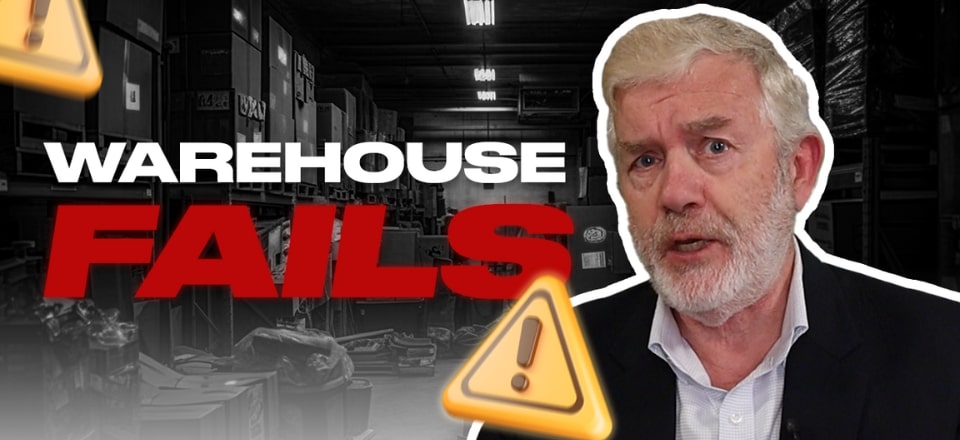There’s been a notable increase in demand for assistance in improving warehouse performance.
We’re addressing key challenges in warehouse management and offering practical solutions. Additionally, we’re highlighting signs of poor warehouse performance to watch out for.
Watch the video below to discover actionable steps to elevate your warehouse operations.
We’ve been fixing up many warehouse performance issues over the last year or two. This week, I’d like to look at the causes, symptoms, and solutions to these problems.
Warehouse Performance Issues
Capacity Constraints
One key issue is running out of space. We’ve seen warehouses operating at over 115% capacity. Typically, once a warehouse hits about 85-95% capacity, operations become constrained. This often leads to the need for redesigning or new warehouse construction, but the real issue lies in stock management and inventory policies.
Performance Problems
Performance issues are often linked to accuracy in picking and inventory management. Poor stock management, especially with slow and obsolete stock (SLOB), can exacerbate these issues. Effective inventory management and ensuring stock moves at a good velocity are crucial.
Escalating Costs
Increasing costs can be driven by various factors such as changes in order profiles, products, or warehouse layout. Identifying the root causes of these costs is essential to address the underlying issues.
Solutions to Warehouse Performance Issues
Layout Optimization
Improving warehouse layout can significantly enhance performance. For instance, narrowing aisles and using articulated forklifts can increase capacity by up to 30%. Different layout configurations like U-flow or L-flow can optimize the movement of goods.
Process Improvement
Optimizing picking processes, such as implementing goods-to-person systems or improving pick path algorithms, can boost efficiency. Ensuring a proper layout of products within the warehouse is also critical.
Inventory Management
Accurate inventory levels and efficient cycle counting processes are essential. Implementing ABC analysis helps maintain the right stock levels and improves picking accuracy.
Slotting
Slotting reduces pickers’ travel distance and increases productivity. Placing frequently used items near the dispatch area, similar to organizing a fridge, can streamline operations.
For learn more about it’s symptoms and detailed insights, check out the video above.
Related articles on this topic have appeared throughout our website, check them out:
- Warehouse Product Slotting: The Ultimate Guide
- KPIs for Your Warehouse: How to Choose and Use Them
- Planning a Warehouse Network and Design: Key Factors to Consider
- 10 Proven Principles for Best Warehouse Design and Operation
- Improve your Warehouse Productivity Through Product Slotting
Editor’s Note: The content of this post was originally published on Logistics Bureau’s website dated March 06, 2024, under the title “Warehouse FAILS – Common Warehouse Management Problems and Solutions“

